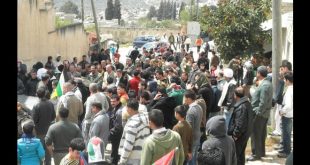Everyone seems to have an opinion about the tragic events in Ferguson, Missouri. But, as Daniel Patrick Moynihan used to say, “You’re entitled to your own opinion but you’re not entitled to your own facts.”
Soon after the shooting death of Michael Brown, this 285-pound young man was depicted as a “gentle giant.” But, after a video was leaked, showing him bullying the owner of a store from which he had stolen some merchandise, Attorney General Eric Holder expressed displeasure that the video was leaked. In other words, to Holder the truth was offensive, but the lie it exposed was not.
Many people who claimed to have been eyewitnesses to the fatal shooting gave opposite accounts of what happened. Some even gave accounts that contradicted what they themselves had said earlier.
Fortunately, the grand jury did not have to rely on such statements, though some in the media seemed to. What the grand jury had, that the rest of us did not have until the grand jury’s decision was announced, was a set of physical facts that told a story that was independent of what anybody said.
Three different medical forensic experts — one representing Michael Brown’s parents — examined the physical facts. These facts included the autopsy results, Michael Brown’s DNA on the door of the police car and on the policeman’s gun, photographs of the bruised and swollen face of policeman Darren Wilson and the pattern of blood stains on the street where Brown was shot.
This physical evidence was hard to square with the loudly proclaimed assertions that Brown was shot in the back, or was shot with his hands up, while trying to surrender. But it was consistent with the policeman’s testimony.
Moreover, the physical facts were consistent with what a number of black witnesses said under oath, despite expressing fears for their own safety for contradicting what those in the rampaging mobs were saying.
The riots, looting and setting things on fire that some in the media are treating as reactions to the grand jury’s decision not to indict the policeman, actually began long before the grand jury had begun its investigation, much less announced any decision.
Why some people insist on believing whatever they want to believe is a question that is hard to answer.
But a more important question is: What are the consequences to be expected from an orgy of anarchy that started in Ferguson, Missouri and has spread around the country?
The first victims of the mob rampages in Ferguson have been people who had nothing to do with Michael Brown or the police. These include people — many of them black or members of other minorities — who have seen the businesses they worked to build destroyed, perhaps never to be revived.
But these are only the first victims. If the history of other communities ravaged by riots in years past is any indication, there are blacks yet unborn who will be paying the price of these riots for years to come.
Sometimes it is a particular neighborhood that never recovers, and sometimes it is a whole city. Detroit is a classic example. It had the worst riot of the 1960s, with 43 deaths — 33 of them black people. Businesses left Detroit, taking with them jobs and taxes that were very much needed to keep the city viable. Middle class people — both black and white — also fled.
Harlem was one of many ghettos across the country that have still not recovered from the riots of the 1960s. In later years, a niece of mine, who had grown up in the same Harlem tenement where I grew up years earlier, bitterly complained about how few stores and other businesses there were in the neighborhood.
There were plenty of stores in that same neighborhood when I was growing up, as well as a dentist, a pharmacist and an optician, all less than a block away. But that was before the neighborhood was swept by riots.
Who benefits from the Ferguson riots? The biggest beneficiaries are politicians and racial demagogues. In Detroit, Mayor Coleman Young was one of many political demagogues who were able to ensure their own reelection, using rhetoric and policies that drove away people who provided jobs and taxes, but who were likely to vote against him if they stayed. Such demagogues thrived as Detroit became a wasteland.
COPYRIGHT 2014 CREATORS.COM
Photo credit: By Loavesofbread – Own work, CC BY-SA 4.0, Wikimedia Commons
Thomas Sowell is a senior fellow at the Hoover Institution, Stanford University.
 CURE News and Clergy Blog News and Commentary for Christians
CURE News and Clergy Blog News and Commentary for Christians



